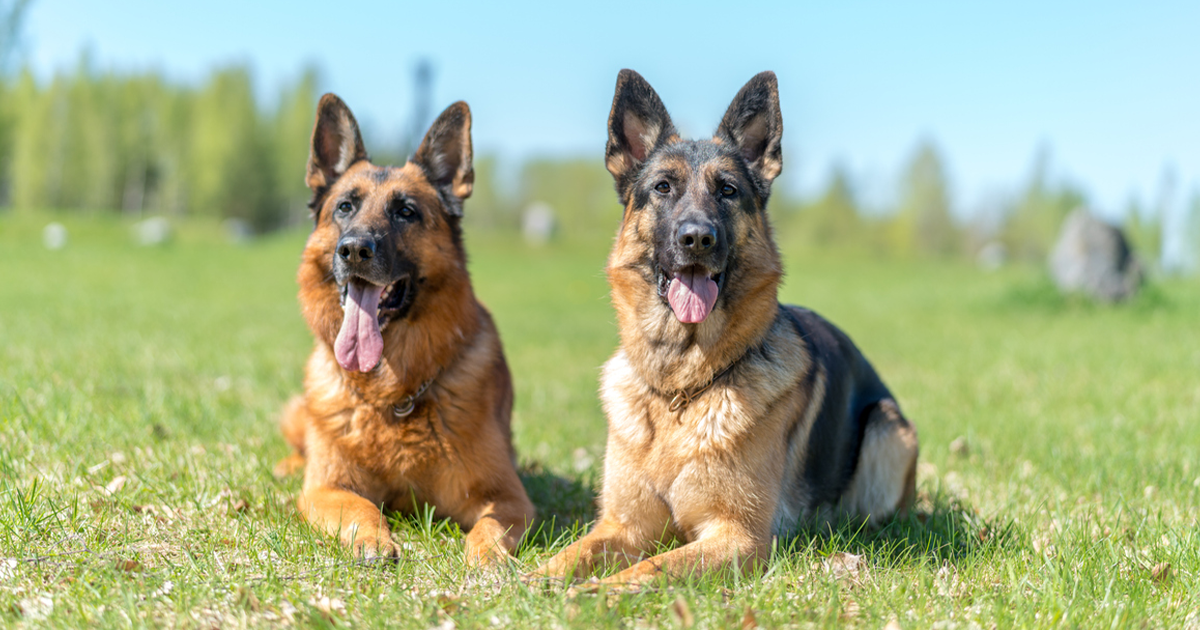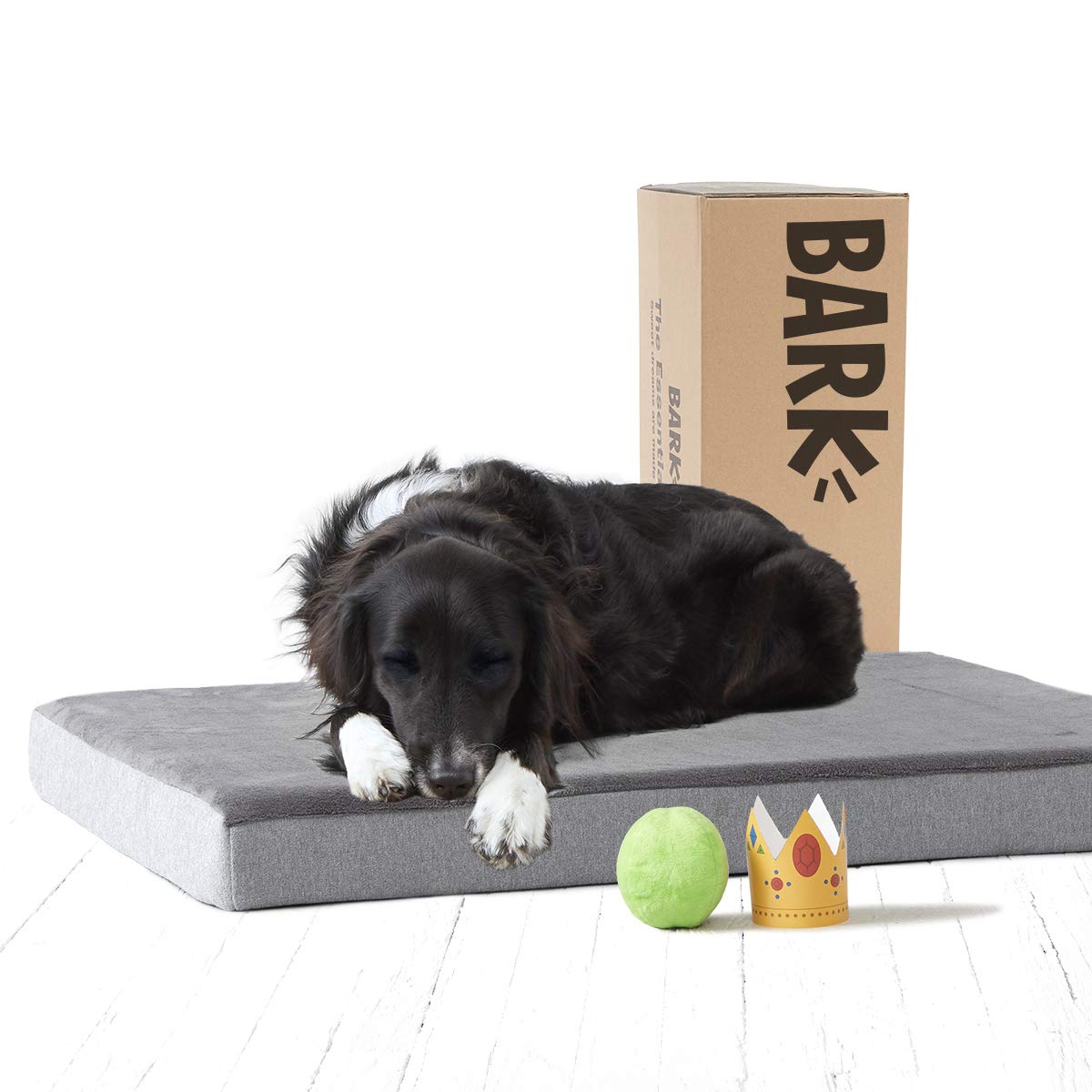***Looking for a gift to blow your new pup’s mind? Spoil them with a BarkBox! Every month BarkBox delivers 2 original toys, designed in-house, 2 full bags of all-natural treats, and a chew. Sign up here and receive a free extra toy every month. <– This deal is worth up to $120 in value if you sign up for a 12-month subscription! 🙂
Despite what you’ve heard in dog food commercials, there is no single perfect kind of dog food. That’s because the “best” food for your dog depends on a variety of factors. These include age, activity level, dietary needs, budget, breed, medical conditions, and more.
So, choosing dog food is a matter of which food is the best fit for your canine companion. As you can see, finding the perfect food for your dog is no walk in the dog park. However, we’ll break down everything you need to know to find the right food for your pup!
Factors to Consider
As we mentioned, many factors determine which food is the best for your pup (and your wallet)! Here are three of the most important factors to consider when choosing dog food.
Age:
Puppyhood

Just like how human infants, toddlers, and adults have varying diets, canines’ nutritional needs also vary with age. Puppies are rapid growers and thus need more calories and nutrients than adult pups. Puppies should be fed dog food specifically labeled for “growth” or the “puppy” developmental stage. Furthermore, large-breed dogs should be given food developed specifically for large-breed puppies since these breeds have slightly different nutritional needs.
Veterinarians generally recommend feeding puppy-formulated food until the dog has reached 90% of its adult size. Generally, this is achieved at 12 months in small and medium dogs and at 18 months in large dogs.
Adulthood


You’re in luck! Feeding your dog becomes simpler as your dog enters adulthood. The majority of commercially-available dog foods are appropriate for adult dogs. As your dog matures out of puppy-hood, her metabolism and activity level may change. Depending on these factors, your dog may be perfectly fine on standard adult dog food or may need specially-formulated food, like those made for dogs on diets.
Seniorhood


Few things in this world are more precious than senior dogs! Though you may always see your pup as a puppy, aging dogs experience inevitable changes that affect their nutritional needs. As a dog’s age increases, their activity level typically decreases. A dog who burns less calories should then ingest less calories. Furthermore, some senior pups need extra nutrients and vitamins.
The age a pup reaches senior status depends on her breed. Depending on their breed, a dog is typically considered a mature adult by 6- to 9-years-old. Because of the variability between breeds and uniqueness of each dog, it’s important to consult with your veterinarian on what food is best for your senior dog.
Activity Level:


Just like how human metabolisms tend to slow after adolescence (hello #Freshman15), dogs also experience slower metabolisms after the puppy stage. A slow metabolism can put your pup at risk of unnecessary weight gain. The risk for obesity is also influenced by a dog’s breed, health condition, and activity level.
Some dogs zoom around the home nonstop while others are canine couch potatoes. Then, of course, maybe you enjoy running with your dogs in the park, or throwing a ball to them off-leash.
Your dog’s diet should be adjusted based on their activity level. This is especially important as dogs age and inevitably slow down. Highly active dogs may need more nutrient-heavy foods and bigger meals.
On the other hand, low-energy dogs who don’t exercise a whole lot may require special food formulated “diet” or “senior” food. It’s always a good idea to consult with your veterinarian on the proper diet for your dog.
Budget:


Unless you’re a Kardashian or the Queen of England, budget is likely a factor you’ll want to consider! Typically, the order of least to most costly dog foods is: dry food, wet/canned food, raw/cooked meals prepared at home, and pre-cooked meal services. A month of feeding a medium-large sized dog could cost $20 to $260 (range reflects prices of dry food and pre-cooked meal service).
Dry food is typically the least costly and most convenient option. It is also sold in the largest quantities and boasts a long shelf-life. So, dry food means less trips to the grocery stores or online orders which results in less gas money or delivery fees. Though all varieties of dog foods offer nutritious options, it is important that you choose a dog food that both fit your dog’s dietary needs and your pet care budget.
Types of Dog Food
Not all dog food is created equally! A quick trip to the pet store can show you that. It can be daunting, overwhelming, and confusing to shop amongst the endless options of dog food. With so many dog foods out there, where to begin!? Well…here! We’ll break down the difference between dog food choices so your next pet store visit will be a breeze.
Wet Food VS. Dry Food
Dry Food:
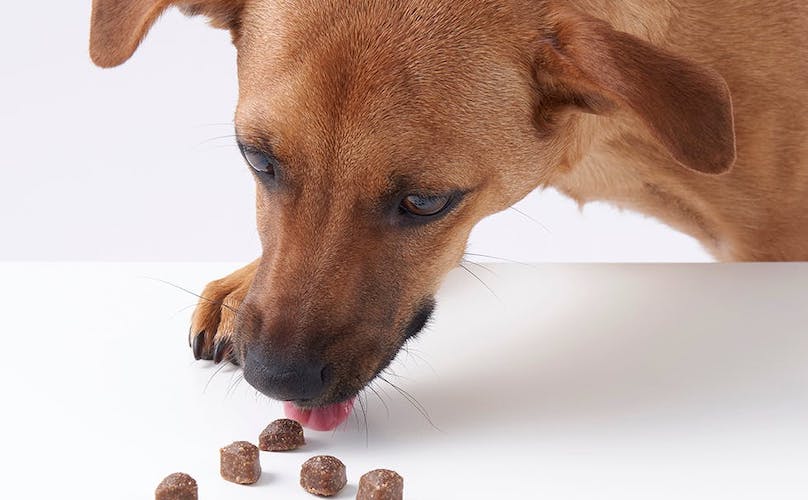

Both wet and dry dog food have their advantages. Dry food (also referred to as “hard food” or “kibble”) is the most widely available and affordable dog food, making it a popular option amongst pup parents. Also, dry food does not require refrigeration so it is easier to store. Dry food is even believed to be good for dental hygiene.
The cost of dry dog food ranges according to brand, variety, and bag size. An 33-pound bag of adult dry dog food costs around $20, such as this Pedigree Adult Dry Dog Food priced at $21.99. A bag this size may last your dog 1-2 months depending on its dietary needs.
Looking for more dry dog food options? Check out this list.
Wet Food:
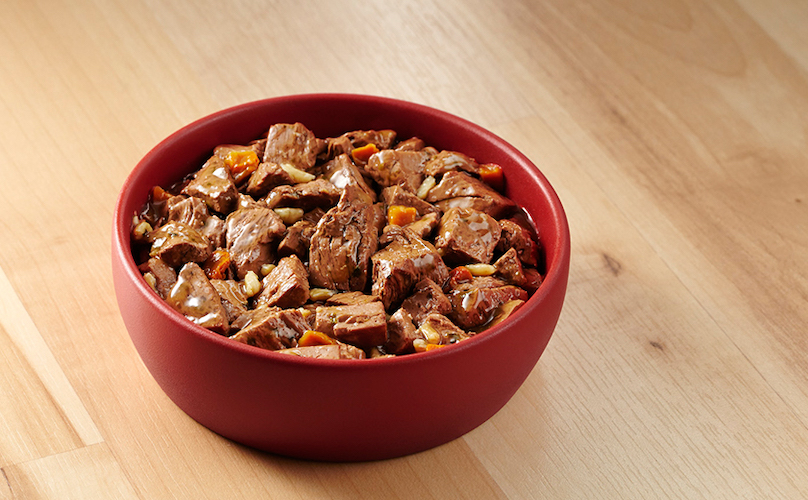

Wet food (also called “canned food”) is often tastier, making it a good option for particularly picky pups. True to its name, wet food has a higher water content than dry food and is therefore softer. Wet food can benefit dogs who need extra hydration or those who have difficulty munching on hard, dry food. The American Kennel Club notes that, “wet dog food contains many of the same ingredients as dry dog food, but not in the same quantities.”
Wet food tends to contain more textured proteins meat, poultry, fish, and animal byproducts. Like dry food, the cost of wet dog food varies on a number of factors. A case of wet dog food usually costs $10-20 and may last 1-2 weeks depending on your dog’s feeding needs. For instance, this 12-count case of canned Pedigree Wet Food is priced at $12.34.
Dry VS. Wet Verdict
Both dry food and wet food have benefits. What dog food companies won’t tell you is that there really isn’t a “better” option here. Veterinarians generally agree that both are comparable in health and nutrition.
Raw Food VS. Cooked Food:


The thought of feeding dogs raw (aka uncooked) meat may make you squirm. However, prior to domestication, canines were adept in hunting prey and living off their raw meat. Many dogs are capable of digesting (and enjoying!) raw foods. But, before you start slapping raw slabs of meat onto your dog’s dinner plate, there are a variety of factors to consider in safely feeding a raw meat diet.
Many commercially available raw dog foods are not USDA certified aka not fit for human consumption. Though your canine isn’t human, she should be treated with the same respect. Such ingredients are more likely to contain bacteria that is harmful for your dog. Therefore, it is important to ensure that the raw meats you feed your pup are USDA certified. Possible risks of a raw food diet include contamination with pathogens and gastrointestinal injury. Raw meat is typically not suitable for dogs with compromised immune systems or digestive immune systems. Be sure to consult with your veterinarian if you are considering a raw food diet for your dog.


Cooked food is a great option for pups and pup parents want to transition from kibble and canned foods but aren’t quite prepared to tackle raw foods. Cooked food is also a better fit for dogs and dog parents who cannot eat or handle raw food due to a compromised immune system. Cooked food can also be a tasty and nutritious supplement to kibble/canned-food diet.
Though research has found that animals digest whole food diets better than kibble-based diets, these studies did not find significant differences between feeding cooked and uncooked ingredients.
Pre-Cooked Options:


Want to prepare your pup cooked meals but don’t have the time to be a part-time canine chef? Fortunately, there are companies dedicated to bringing well-balanced, pre-prepared cooked meals straight to your doggy door. Here’s an overview of three of the most popular pre-cooked dog food options.
Ollie


Overview: Ollie vet-formulated menu options are rich in variety. Ollie uses an algorithm to customize your dog’s meal plan, based on age, breed, and weight.
Food: With Ollie, your dog can dine on Healthy Turket Feast, Hearty Beef Eats, Chicken Goodness, and Tasty Lamb Fare. What really makes Ollie shine is its secondary ingredients, which include pumpkin, carrot, kale, lentils, butternut squash, rutabaga, chickpeas, and more. Bonus, the company uses human-grade ingredients. Mmm, your dog may not be the only one drooling at feeding time!
Cost: Ollie’s prices depend on a variety of factors including age, weight, activity, and more. Ollie states that costs start at “$2/day for small dogs and averages $6/day depending on the size of your dog and portions they’ll want to eat.” Costs also depend on your meal selection. Though Ollie does not offer specific price quotes online, This Dogs Life found that costs for a 55-pound dog ranges For a 55-pound dog $59.98-$65.98/week or $8.57-$9.42/day (range includes less costly meal, Hearty Beef Eats, to most costly meal, Healthy Turkey Feast).
Ollie has two main delivery plans. With the full meal plan you receive 14 trays (28 meals) every two weeks. The second plan is designed to supplement your dog’s regular meals and comes in 7 trays every four weeks. Ollie allows customers to skip, pause, and make changes at any time. Ollie even donates 1% of profits to shelters and rescues.
The Farmer’s Dog
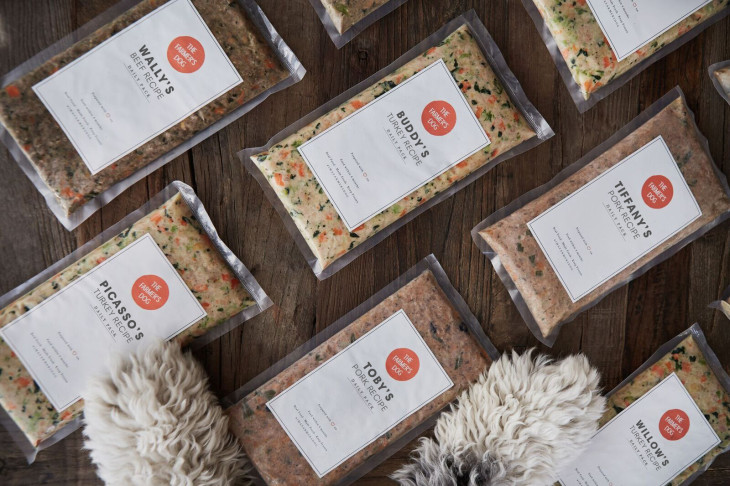

Overview: Like Ollie, The Farmer’s Dog meals were developed by board-certified veterinary nutritionists. The company also uses an algorithm to design a custom diet plan for your dog.
Food: All ingredients are USDA human-grade and are sourced from restaurant suppliers, local farms, and other human food sources. Basically, your dog will be dining better than you with The Farmer’s Dog. Their meal options include Turkey and Parsnips, beef and Lentils, and Pork and Sweet Potato. Each meal has a savory protein base, veggies, and nutrient/vitamin supplements.
Cost: The Farmer’s Dog states that meals start at $2/day and include free shipping. Like Ollie, The Farmer’s Dog pricing depends on your dog’s attributes. Also like Ollie, your meal selection affects the price (the range includes price for least expensive meal, Beef and Lentils, and most expensive meal, Turkey and Parsnips). Meals can be ordered on a weekly or daily basis. For a 55-pound dog, pricing ranges from $62.57-$65.61/week or $8.94-$9.37/day.
FreshPet
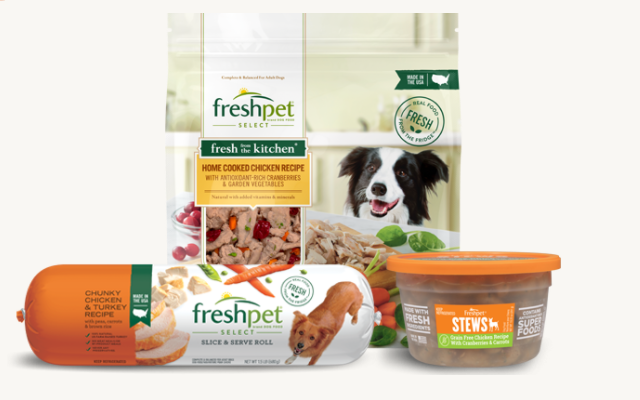

Overview: While Ollie and The Farmer’s Dog are more directly comparable, FreshPet is slightly different. Unlike the other two makers, FreshPet meals can be purchased in select grocery stores. Also, FreshPet does not offer meal plans with algorithm-based customization. However, it has the greatest variety in products, so there’s a FreshPet meal perfect for any pup! While this may be not be favorable for those seeking a delivery service, this is a great option for pup parents hoping to forego the custom meal plan price tag.
Food: FreshPet meals are made of all-natural, locally sourced, and preservative free ingredients. The meals consist of 100% natural farm-raised poultry, beef, and fish, fiber-packed veggies, and antioxidant-rich fruits. Like the Ollie and The Farmer’s Dog, FreshPet foods are steam-cooked and not raw.
Cost: Since FreshPet is sold through third-party sellers and has a great variety of products, pricing heavily depends on the seller and product. A 4.5-pound bag of FreshPet’s Home Cooked Chicken Recipe wet food costs $19.99 from Target. This bag can feed a 55-pound dog for nearly 1 week according to FreshPet’s feeding suggestion.
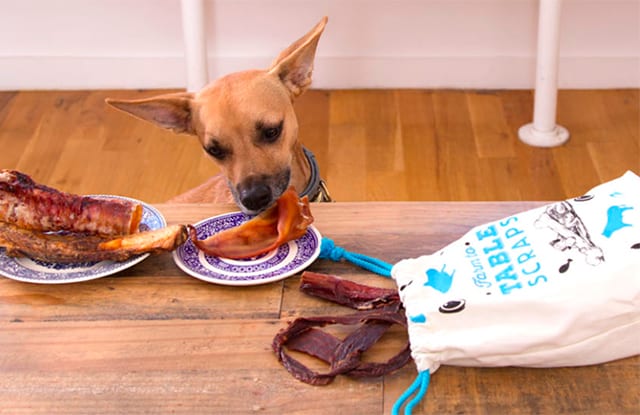

There you go, a comprehensive guide to what kind of dog food you should get for your dog! For many pups, their stomach is the way to their hearts. By following this guide, you’ll capture your new dog’s heart in no time!
Looking For More Posts Like This?
10 Dry Dog Foods You (And Your Pup) Will Love
How Do You Introduce Your New Dog To Your Old Dog?




